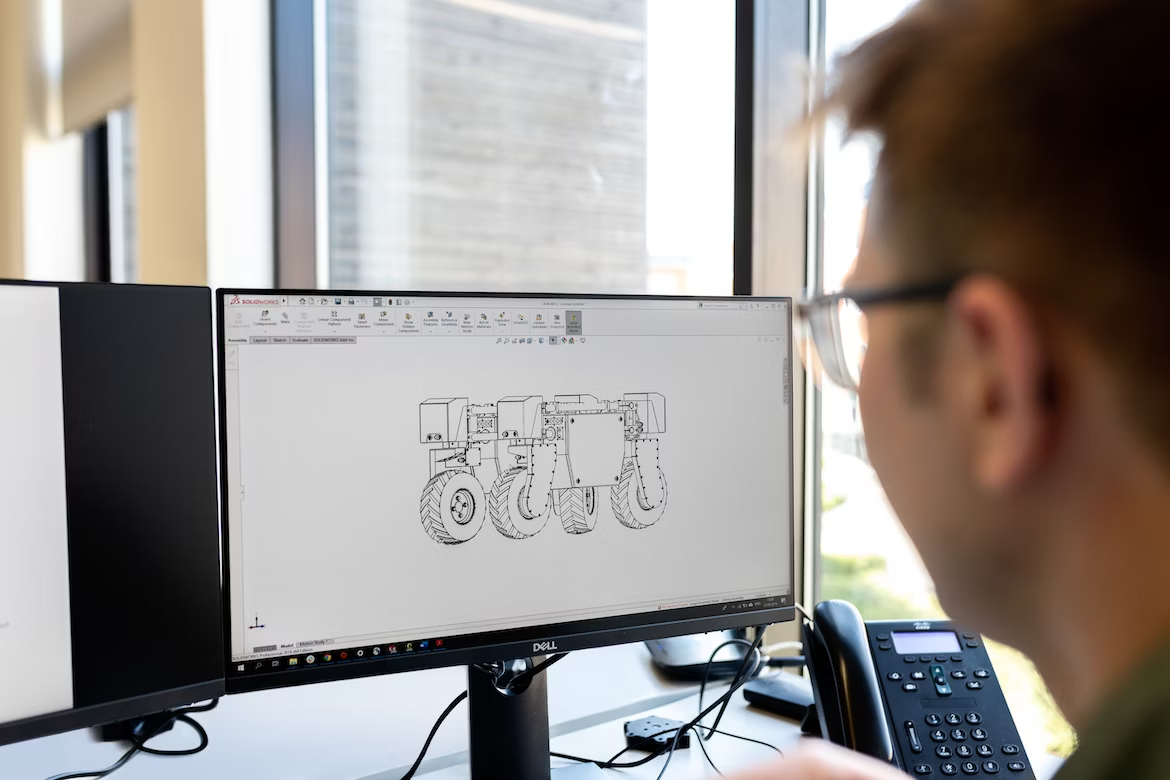Accessible Tech and Robotics Advancements

As opposed to yesteryear, robotics are used for a variety of purposes today. Robotic nurses deliver medication and food to patients, industrial assembly machines are now autonomous, and driverless buses safely deliver passengers to their destinations.
Living in a robotics-rich world is exciting. However, robots are more than gimmicks. At their core, robotics are designed to help us live happier, fuller lives.
Folks with disabilities are set to benefit from robotic developments, too. People with mobility disabilities can lean on a range of assistive technologies, while folks with developmental disabilities may find support in the form of robotic companions.
Education and Robots
The current education system isn’t designed to support folks who require extra support or an atypical approach to learning. State-wide curriculums force teachers to adopt lesson plans that may undermine children with developmental disorders like autism.
As a solution to this systematic issue, researchers from the University of Loughborough developed a robot with the intent of helping students with autism learn on their own terms. The result: the Orbit Education Robot. This robot helps with emotional recognition and leans on the insights of speech and language therapists.
Overall, education robots help improve accessibility and equity in the education system. Education robots ensure that children from all backgrounds have access to educational materials that inspire creativity and improve self-esteem. Robotics, like the LEGO Technic, give children the chance to experiment and design a robot for themselves — even if they can’t visit an engineering lab in person.
The goal of educational robots like Orbit isn’t to replace teachers. Instead, the Orbit robot is designed to facilitate learning and ensure that every child has a chance to develop key skills like empathy and verbal interaction.
Wearables
When most people think of robots, they imagine life-size service bots or assembly machines. However, in reality, robots can fit on users' wrists, faces, and fingers.
The recent boom in wearables has been largely driven by developments in 5G technology. This technology has ushered in a new era of wearables — ensuring that even the smallest of devices can connect to the web. Wearable developers like Empatica have even developed wrist-worn seizure sensors for people with epilepsy.
Other wearables, like hand exoskeletons, are helping people “in need of rehabilitation or assistive therapies.” These user-friendly devices can assist people in their daily lives and help those who live with prosthetics or with muscular atrophy. Wearable robotics are largely in the prototype phase but are expected to improve users’ mobility and independence.
Mobility Aids
More than 1.3 billion people live with a “significant disability.” However, many treatment methods offered to those with mobility disabilities are largely ineffective as persons with disabilities have twice the risk of developing conditions like asthma, diabetes, stroke, and obesity.
Mobility aids that utilize robotics can improve the lives of people with disabilities. Robotic wheelchairs like Ming Liu’s can navigate 3D spaces by employing ultrasound sensors. Liu — IEEE Senior Member and Assistant Professor at Hong Kong University of Science and Technology — explains that his robot “creates a 3-D representation of the environment,” and can “can automatically move from point A to point B.”
Recently developed assistive robotics can be paired with smart technology to improve the quality of life for users with disabilities. For example, robotics like Roomba can be partnered with virtual home assistants to work via voice commands. In the coming years, more consumer robots will work their way into our homes in the form of Yarbo and the Hapta Gimbal.
Freedom and Self-Sufficiency
It’s important to recognize that disability does not equal inability. Folks who live with disabilities are entirely capable of taking care of themselves or fulfilling their goals without the oversight of every good-spirited passerby — and robotics are here to help.
Robotics can give people who live with disabilities a chance to become even more self-sufficient. This is particularly important in the workplace, where misguided opinions about disabilities continue to deter employees from all backgrounds.
Technology is improving diversity, equity, and inclusion (DEI) by ensuring that all employees can work without distraction or prejudice. Technology like screen readers and subtitles for video meetings are now standard in most major firms. AI-led robotics is leveling the playing field and giving every employee a chance to pursue their career goals.
Robotics can also help those with mobility disabilities travel without supervision. This is best illustrated through self-driving cars that use automation to drive without human intervention. This level of automation offers users a heightened level of freedom while reducing accidents, congestion, and carbon emissions. Robotic cars aren’t approved for public use yet, but the world’s first automated bus service has recently been rolled out in Edinburgh.
Conclusion
Improvements in artificial intelligence and automation have ushered in a new era of robotics. Self-driving cars and mobility aids give folks with disabilities greater freedom and heightened self-sufficiency. Similarly, wearable tech can help people track their health, improve rehabilitation treatments, and alleviate their symptoms.
Thanks for helping to keep our community civil!
This post is an advertisement, or vandalism. It is not useful or relevant to the current topic.
You flagged this as spam. Undo flag.Flag Post


